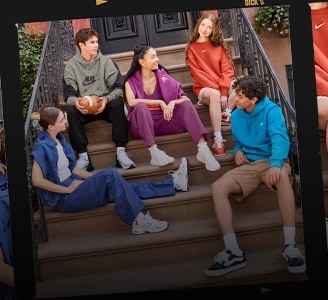Choosing the Perfect Sunglasses for Sight Fishing with Captain Blair Wiggins
Learn how to find the best polarized sunglasses to enhance your sight fishing experience with these saltwater tips and tricks.
Sight fishing can be a fun way to experience the action of saltwater fishing, but you can have a hard time catching what you can’t see. Because your sight is vital to your success, fishing sunglasses are a necessity when saltwater fishing. Pro saltwater fisherman Captain Blair Wiggins underlines the importance of a quality pair of shades. “The most important piece of equipment that you can have on the water with you when you’re sight fishing is polarized lenses.”
There are many options available to anglers wanting to see (or rather, block out) the light, particularly with lens color. With this insight and guidance from Wiggins, you’ll be able to see more clearly through the water for a smooth and successful fishing trip.
STICK WITH POLARIZED LENSES
Polarized lenses might be a luxury for recreational sunglasses, but when out on the chop, they’re an absolute necessity. Polarization helps eliminate glare coming off of the water, while helping to maintain a crisp picture. Polarization can also help shed the water’s mirror-like surface away to help you see through to identify rocks, structures and, of course, fish.
Once you understand the need for polarized lenses, you can then move on to choosing a lens color ideal for your saltwater sight fishing needs. Wiggins has a few suggestions on choosing the best polarized sunglasses for specific locations and conditions.
TIPS FOR INSHORE SIGHT FISHING
When you’re fishing the flats and bays, staying just a few miles from shore, Wiggins notes that the water can have a tannic tea-colored tint to it. This is because of the dirt and sand content of the area. To better adjust to this water, Wiggins says, “I like to use a copper or a brown lens. Something that brings out the browns and reds of the color of the fish that you’re targetingt.”
A brown or copper lens can also help with definition, making identifying fish easier. Brown or copper lenses are also not usually very dark, making them quality options for anglers on the water in the early morning or later afternoon.
TIPS FOR OFFSHORE SIGHT FISHING
If you decide to venture out into deeper water, Wiggins has another lens color suggestion. “Match the water.” The blue depths beneath your boat will call for blue or silver lenses. These can be better geared to combat the enhanced glare out on the open water.
And what sort of fishing sunglasses should you have for cloudy days? The “match the water” approach applies to overcast conditions as well. When the skies and water turn gray, mirror that spectrum in your shades. “Just something really clear and dark to bring those contrasts out of the fish,” Wiggins says.
GREEN LENSES: THE TOTAL PACKAGE
Bridging the gap between inshore and offshore lenses is the green lens — an all-around, well-performing option for anglers looking for one solid pair of sunglasses. Wiggins notes that green lenses can bring out the contrast of the fish, great for both saltwater fishing locations. Green lenses are popular with saltwater fishermen who don’t want to carry multiple pairs of sunglasses around, and can be a useful multi-purpose addition to your fishing gear.
Hook into better sight and fewer worries on the water by gearing up with the right polarized sunglasses. See saltwater fishing in a whole new light with these helpful tips from Captain Blair Wiggins.








